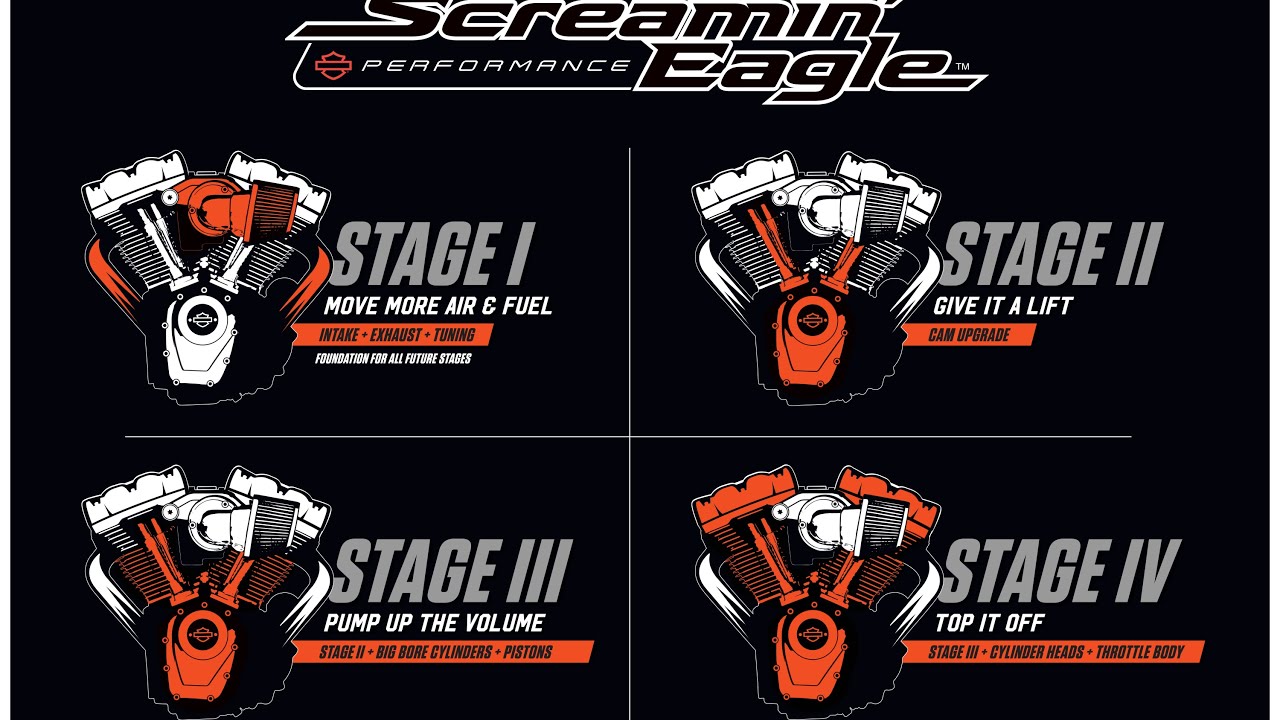Motorcycle Performance Stages Explained: What Does It All Mean?

In the motorcycle world, modifications are often categorized into “Stages,” but what does this really mean? Understanding these stages can help riders make informed decisions when upgrading their bikes. Many manufacturers and aftermarket companies use the “Stage” system to simplify complex performance modifications. The term describes the level of modification and performance gains achievable with each kit.
The “Stage” concept has been around since the 1980s, when companies like Kerker and K&N introduced performance kits in levels. These stages ranged from semi-restrictive exhausts and stock airboxes to open headers with airboxes removed. This approach allowed riders to understand the performance impact of each modification. Today, the “Stage” system remains popular, particularly in the V-Twin performance market. Let’s break down what each stage typically involves.
Stage 1: A Simple Power Boost
Stage 1 modifications are entry-level upgrades designed to improve engine efficiency and power. These upgrades usually include a high-flow air intake, exhaust system, and an EFI tuner. The result is a noticeable performance boost, typically increasing power by 10-15% over stock. Example: 2018 Road Glide, stock 107″ engine, Jackpot 2/1 exhaust, FM AC/DC air cleaner, Dynojet Power Vision tuner. cases it would include a larger throttle body & injectors (depending on the specific model). Additional supportive mods would be required such as clutch and other upgrades.
Stage 2: Enhanced Performance with a Camshaft Upgrade
Stage 2 builds take things further by adding a performance camshaft to the Stage 1 package. This upgrade significantly improves airflow and combustion, resulting in a 20-25% power increase over stock.
Example: 2018 Road Glide, Wood WM8-222 cam, stock 107″ engine, Jackpot 2/1 exhaust, FM AC/DC air cleaner, Dynojet Power Vision tuner.
Stage 3: Big Bore, Big Gains
Stage 3 modifications include a mild big bore kit and cam upgrade, retaining stock components like the throttle body. Riders can expect a 30-40% increase in horsepower.
Example: 2018 Road Glide, 117 big bore kit 10.8 comp, Wood WM8-222 cam, FM AC/DC air cleaner, heavy-duty clutch springs, Dynojet Power Vision tuner.
Stage 4: High Compression, Higher Performance
Stage 4 involves moderate compression big bore kits, headwork, and aggressive camshafts. This stage often requires larger throttle bodies and injectors. Power gains can reach 50-60% over stock.
Example: 2018 Road Glide, 120 big bore kit 11.4 comp, Wood WM8-999 cam, FM Level B CNC heads, 64mm TB, 5.5 injectors, AIM SDR lock-up clutch & springs, Dynojet Power Vision tuner.
Stage 5: Extreme Power and Precision
Stage 5 is a high-compression, custom build requiring advanced modifications, including comprehensive headwork and an aggressive cam. It demands precise tuning and support mods. Gains can exceed 70-80% over stock.
Example: 2018 Road Glide, 124 big bore kit 11.9 comp, Wood WM8-9F60 cam, FM Level B heads with oversized valves, 64mm TB, 7.3 injectors, custom exhaust, custom air cleaner, Dynojet Power Vision tuner.
Final Thoughts: Choosing the Right Motorcycle Performance Stage
Understanding performance stages helps riders select upgrades that meet their needs and riding style. From the simple power boost of Stage 1 to the extreme performance of Stage 5, each level offers unique benefits. Knowing what each stage involves makes it easier to tailor your bike’s performance to your preferences. Please reach out to us at Fuel Moto if you want to know more.
